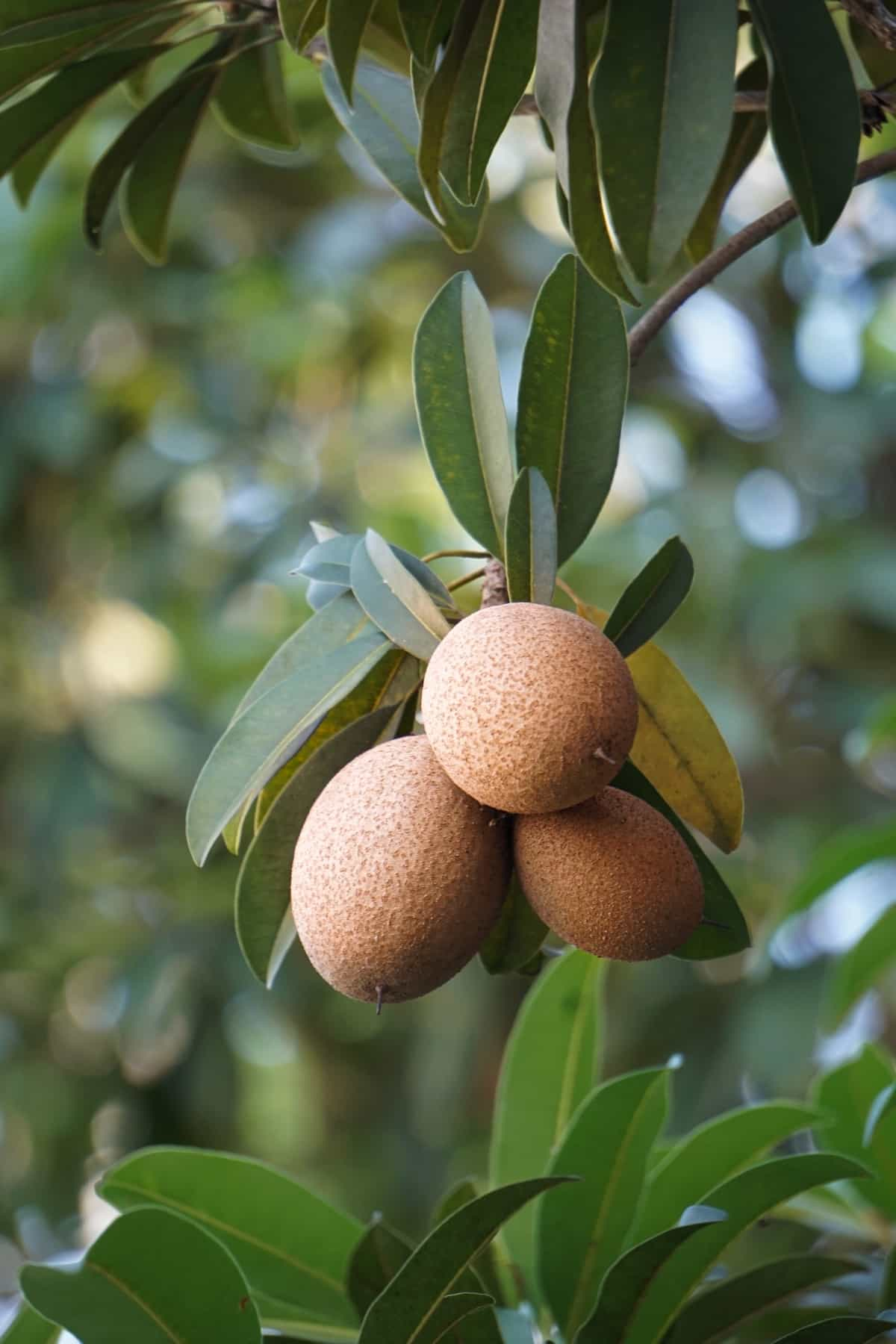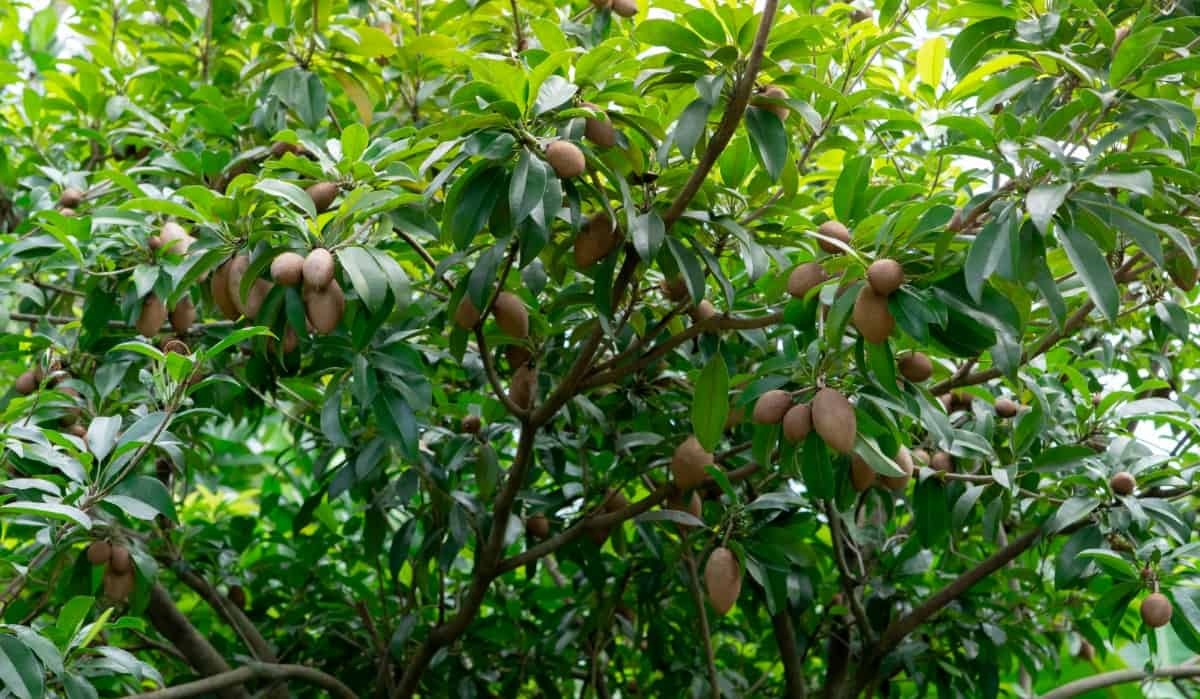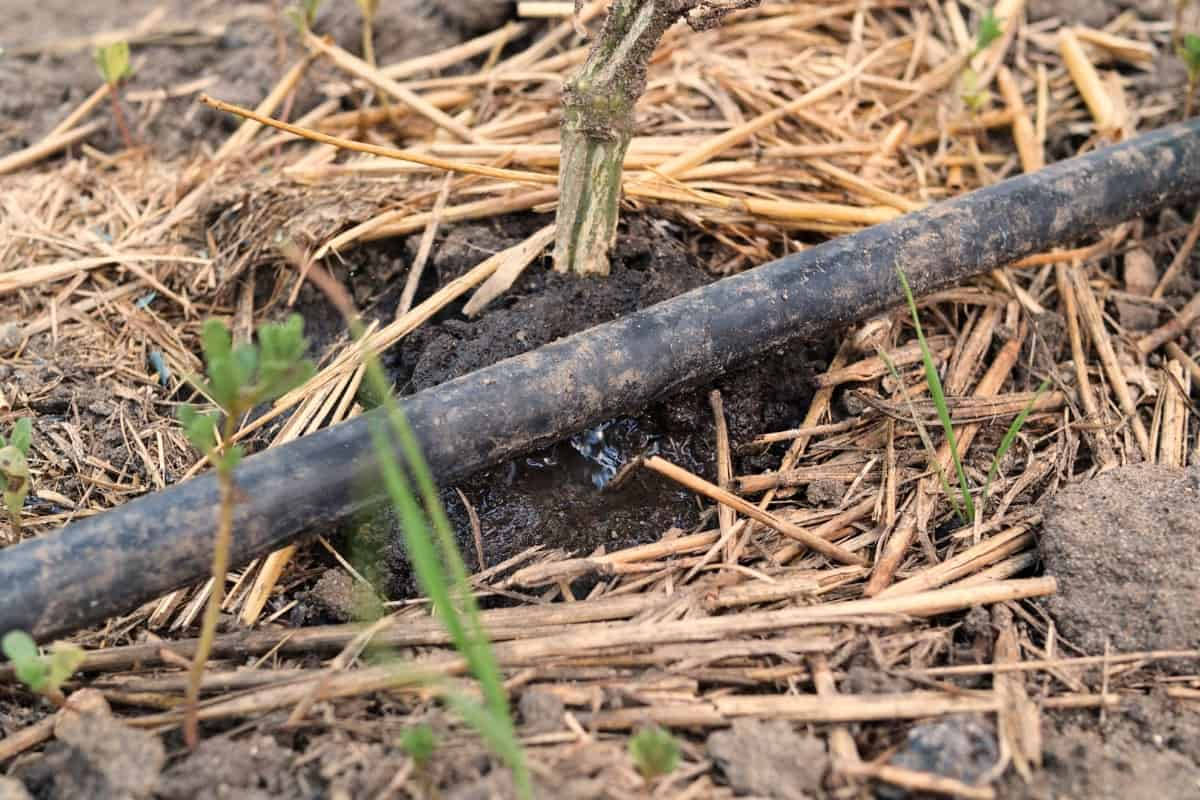Drip irrigation is the latest and most efficient method for watering crops like sapota, offering precise control over water delivery and minimizing wastage. The initial investment for drip irrigation in a sapota plantation typically involves various components, each contributing to the overall cost. On average, the initial investment for drip irrigation in a sapota plantation can range from Rs. 1,10,000 to Rs. 1,50,000 per acre. This cost includes the procurement of drip irrigation materials, labor charges for installation, and any additional infrastructure needed.

Cost of Drip Irrigation Per Acre for Sapota
Evaluate the Cost of Drip Lines and Emitters for Sapota Fields
The cost of drip lines and emitters is a significant aspect of the overall investment in drip irrigation for sapota fields. Drip lines, also known as tubing, come in various materials, such as polyethylene and PVC, with different diameters and thicknesses. The cost of drip lines per acre can range from Rs. 15,000 to Rs. 20,000, depending on the quality and specifications chosen by the farmer.
Emitters, responsible for releasing water at controlled rates directly to the plant root zone, also contribute to the overall cost. The cost of emitters per acre can range from Rs. 10,000 to Rs. 15,000, depending on the type (drippers or micro-sprinklers) and the desired flow rate.
Analyze the Expense of Filters and Pressure Regulators in Drip Irrigation Systems
Filters are essential for preventing clogging of emitters and drip lines by removing debris, sediments, and other impurities from the water. The cost of filters per acre can vary based on the type and quality of the filter chosen. Typically, farmers can expect to invest anywhere from Rs. 8,000 to Rs. 15,000 per acre.
Pressure regulators are vital for maintaining consistent and optimal water pressure throughout the drip irrigation system. The cost of pressure regulators per acre is generally in the range of Rs. 8,000 to Rs. 10,000, depending on the specifications and quality.
Estimate the Cost of Automation and Control Systems in Drip Irrigation for Sapota Plantation
The cost of implementing automation and control systems for drip irrigation in Sapota plantations in India can vary based on factors like farm size, technology features, and local labor expenses. On average, the cost per acre may range from Rs. 25,000 to Rs. 30,000. This estimate includes expenses for sensors, controllers, valves, pipes, and installation. Advanced systems with remote monitoring capabilities may incur higher costs but offer increased efficiency.
Assess the Price of Pumps and Pumping Stations for Drip Irrigation in Sapota Farming
Pumps and pumping stations are critical components of drip irrigation systems for sapota farming, responsible for delivering water from the source to the drip lines. The cost of pumps and pumping stations depends on factors such as the type of pump, its capacity, and the size of the sapota plantation.
In case you missed it: Cost of Drip Irrigation Per Acre for Banana Plantation: Exploring Installation Costs Along with Subsidy

Centrifugal pumps are commonly used in drip irrigation systems, and their cost can range from Rs. 20,000 to Rs. 30,000 per acre, depending on the pump’s horsepower and efficiency. Submersible pumps, which are installed directly in water sources like wells, may have a higher upfront cost, typically ranging from Rs. 30,000 to Rs. 50,000 per acre.
Explore the Cost of Fertilizer and Nutrient Injection Systems in Drip Irrigation for Sapota
The cost of these systems adds another dimension to the overall investment in drip irrigation for sapota farming. The expense associated with fertilizer and nutrient injection systems varies based on factors like the type of system, the number of nutrient tanks, and the level of automation. Basic systems that allow for manual nutrient mixing and injection may cost between Rs. 15,000 and Rs. 25,000 per acre.
More advanced and automated systems with features like programmable nutrient schedules and precise injection control can range from Rs. 30,000 to Rs. 60,000 or more per acre. The investment in these systems is justified by the potential for improved nutrient management, increased crop yields, and resource efficiency.
Calculate the Labor and Installation Costs for Drip Irrigation in Sapota Plantations
- Clear and level the land and prepare it for the installation of drip lines and emitters.
- Planned and designed the layout of the drip lines and emitters to ensure uniform water distribution.
- Placing drip lines, emitters, filters, pressure regulators, and other system components in accordance with the planned layout.
- Setting up the pump, connecting pipes, and establishing the pumping station.
- Ensuring the proper working of the entire system and calibrating it for optimal performance.
The labor and installation costs can range between Rs. 20,000 and Rs. 25,000 per acre, depending on factors like the complexity of the installation, labor rates in the region, and the type of drip irrigation system chosen.
Factor the Maintenance and Repair Expenses for Drip Irrigation Systems in Sapota Farming
These costs, typically incurred annually, cover routine upkeep, replacement of worn-out components, and unforeseen repairs to ensure optimal system functionality. Factors influencing expenses include the farm size, equipment specifications, and local labor rates. In rupees, this may range from 10,000 to 15,000 annually for a moderate-sized sapota farm, encompassing labor, spare parts, and occasional specialized services. Proactive maintenance aids in preventing potential breakdowns, enhancing water efficiency, and safeguarding long-term productivity in sapota orchards.
Energy Costs Associated with Drip Irrigation in Sapota Cultivation
The energy needed to operate the pump, whether it’s a centrifugal or submersible pump, contributes significantly to the overall energy costs. The power consumption depends on the pump’s capacity, head requirements, and efficiency. On average, pump energy costs can range from Rs. 10,000 to Rs. 20,000 per acre annually.
In case you missed it: Cost of Drip Irrigation Per Acre for Dragon Fruit: Exploring Installation Costs Along with Subsidy

If the drip irrigation system includes automation and control systems, additional energy costs may be incurred for running sensors, actuators, and controllers. This could add another Rs. 5,000 to Rs. 10,000 per acre annually, depending on the level of automation.
Table for Cost of Drip Irrigation per Acre for Sapota Plantation
| Item | Cost Range (INR) |
| Drip Lines & Emitters | 25,000-35,000 |
| Filters and Pressure Regulators | 16,000-25,000 |
| Automation and Control Systems | 25,000-30,000 |
| Pumps and Pumping Stations | 20,000-30,000 |
| Fertilizer and Nutrient Injection Systems | 15,000-25,000 |
| Labor and Installation Costs | 20,000-25,000 |
| Maintenance and Repair Expenses | 10,000-15,000 |
| Energy Costs | 10,000-20,000 |
Government Subsidy for Sapota Drip Irrigation
Several governments offer subsidies to encourage sustainable agricultural practices, including the adoption of efficient irrigation systems like drip irrigation for Sapota plantations. The Agriculture and Farmers Welfare (DA&FW) Department is implementing a scheme called “Per Drop More Crop under Pradhan Mantri Krishi Sinchayee Yojana (PMKSY-PDMC)” from 2015-16 in the Country which focuses on water conservation at the farm level through Drip and Sprinkler irrigation systems.
The government provides financial assistance/subsidy at 55% of the indicative unit cost to small and marginal farmers and at 45% to other farmers for drip and sprinkler irrigation installation. The beneficiary bears the remaining cost. However, some States provide additional incentives/top-up subsidies to reduce farmers’ share for the adoption of micro-irrigation.
Compare the Overall Operational Costs of Drip Irrigation vs. Traditional Methods in Sapota Farming
Drip irrigation systems, though involving a higher initial investment, often demonstrate cost-effectiveness over traditional methods in the long run. Drip irrigation excels in water efficiency, reducing consumption by 30-50% compared to traditional methods, resulting in lower water costs and increased sustainability.
Moreover, drip systems allow precise fertilization through fertigation, potentially reducing fertilizer expenses and enhancing crop yields. The targeted water delivery of drip irrigation contributes to labor efficiency, as the system can be partially or fully automated, diminishing manual labor requirements for irrigation tasks.
In case you missed it: Cost of Drip Irrigation Per Acre for Guava: Exploring Installation Costs Along with Subsidy

Traditional methods, such as flood irrigation, may incur higher labor costs and face challenges related to water wastage and uneven distribution, impacting overall efficiency. While drip irrigation demands careful maintenance, its prolonged operational life and consistent performance make it a cost-effective choice for sapota farmers seeking sustainable and economically viable irrigation solutions.
Conclusion
In conclusion, the cost analysis of drip irrigation for sapota plantations reveals that while there is an initial investment, the long-term benefits, including water efficiency, enhanced crop yields, and reduced labor requirements, outweigh the upfront expenses. Exploring available subsidies further promotes the economic feasibility of adopting drip irrigation, making it a prudent and sustainable choice.
- Feed Your Flock for Less: Top 10 Tips to Save on Chicken Feed
- Ultimate Guide to Ossabaw Island Hog: Breeding, Raising, Diet, and Care
- Hatching Answers: The Top 10 Reasons Your Chickens Aren’t Laying Eggs
- Eggs and Economics: Breaking Down the Cost of Raising Backyard Chickens
- Defend Your Greens: Proven Methods to Keep Iguanas Out of Your Garden
- Ultimate Guide to Cinnamon Queen Chicken: A Comprehensive Guide for Beginners
- Ultimate Guide to California Tan Chicken: Breeding, Raising, Diet, Egg-Production and Care
- Ultimate Guide to Marsh Daisy Chicken: Breeding, Raising, Diet, and Care
- 10 Types of Chicken Farming Businesses You Can Start for Profits